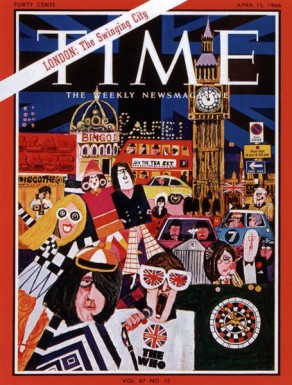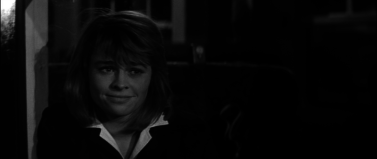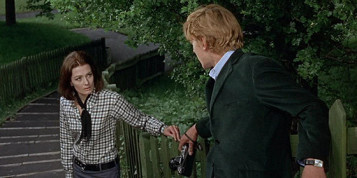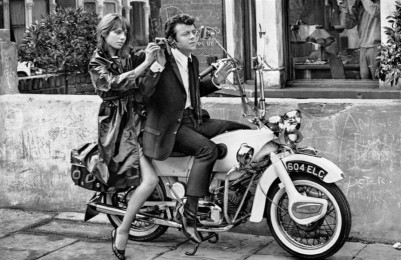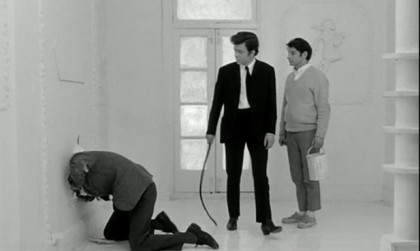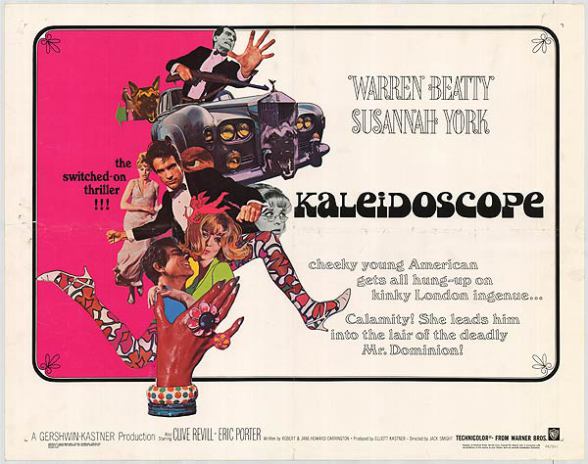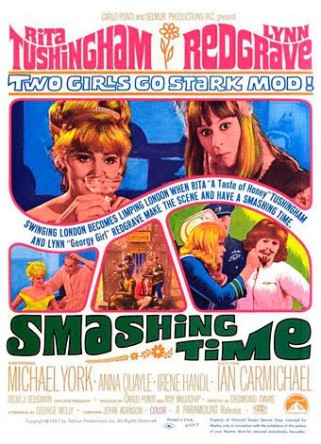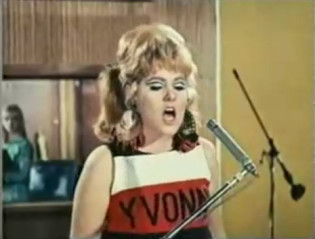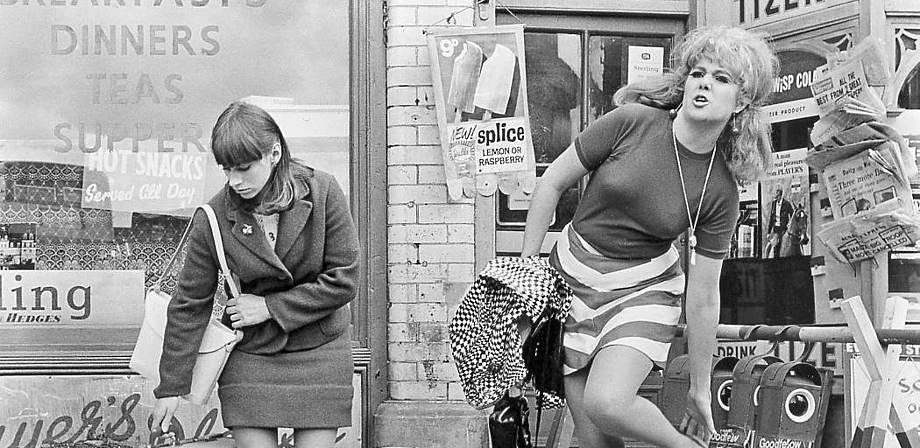
SWINGING LONDON
Does our image of Swinging London now come exclusively from parodies and spoofs? Mike Myers' film Austin Powers: International Man of Mystery seems to cram in almost every element of the 'fab' scene into its opening sequence...
In fact it's actually quite difficult to say with much confidence which films constitute Swinging London films; Robert Murphy, in his chapter on the phenomenon in 'British Sixties Cinema', lists six - Nothing but the Best, The Knack - and how to get it, Morgan: a suitable case for treatment, Georgy Girl, Alfie and Kaleidoscope - but I don't think I'd include Nothing but the Best, and of the other five four (excluding Kaleidoscope) of them are hardly uncritical celebrations of the new-found Swinging scene. Here are posters for some of the films that I would include as Swinging London films, or that at least have some element in them:
The famous Times cover of 15 April 1966 - LONDON The Swinging City - was deliberately designed to attract American tourists to where it was all happening. The cover story inside, by Piri Halasz, was already almost a parody of itself:
Ancient elegance and new opulence are all tangled up in a dazzling blur of op and pop. The city is alive with birds (girls) and beatles, buzzing with minicars and telly stars...The guards now change at Buckingham Palace to a Lennon and McCartney tune, and Prince Charles in firmly in the long-hair set...In a decade dominated by youth, London has burst into bloom. It swings; it is the scene."
With articles like that, it was almost unneccesary for Private Eye to produce its own contribution to the 'scene':
Journal of Ye Plague Year Nineteen Hundred and Sixty-Five
A common conclusion was that the chief carriers of the pest appeared to be certain chronicles and journals which, allowed freely into the homes of rich and poor alike, do spread th'infection daily; these being glossy magazines and Coloured Sections. On contact with these vile effulgences, the reader eventually lapses into a kind of wild madness and the delusion that only the present time is of any importance..."
Robert Murphy makes the point that the six films he cites as most typical of the Swinging London films had been made and released before the Time article in April 1966. I've always thought that the Swinging Sixties started, in cinematic terms anyway, with Julie Christie swinging her handbag as she walks the streets of Bradford in Billy Liar. As she catches the train to London (which Billy of course misses, perhaps deliberately) it is as though the whole British cinema movement goes with her.
Blow Up
If that was all there was to the film though, it would soon become tedious, and although Hemmings'c character is clearly based on David Bailey, there are hardly any scenes set in the core districts of Soho/Carnaby Street/Oxford Street etc. The photographer then believes he has been a witness to a murder, and indeed has taken photographs as evidence, but as he investigates further the body disappears and the evidence seems to evaporate in front of his eyes. Is he imagining it all? Antonioni explores these issues - truth, reality - with an outsider's eye, and only really engages with Swinging London in order to portray it as shallow and ephemeral. The famous last scene summarises the film's questioning of reality/fantasy, without answering the question of which is which:
The Knack - and how to get it
Richard Lester's film The Knack - and how to get it followed on from his huge success directing A Hard Day's Night, and uses the standard narrative device of 'Northern girl coming down to try her luck in the big city' - in this case Rita Tushingham, playing a more naive and wide-eyed version of Jo from A Taste of Honey, but clearly from the same background. (This same plot device features in many a Swinging London film, for example Jane Asher's character in Alfie, or Rita T herself, with Lynn Redgrave, in the comedy Smashing Time - see below).
The start of the film includes a key stylistic element in many of the films of the period, the fantasy sequence:
It's Lester's directorial box of tricks that situate it now so specifically in a time and place, the story itself being quite conventional. Along with the fantasy sequence, there is the use of speeded up camera for comic effect which distances it so much from the early 60s films, and the visual imagery that is now so iconic, seen to best effect in this sequence where Colin (Michael Crawford), Tom (Donal Donnelly) and Nancy (Rita Tushingham) transport Colin's new bed back to his house:
Kaleidoscope
Kaleidoscope is probably the most self-conscious Swinging film, which notably has an American lead in Warren Beatty, although, as Robert Murphy points out, it actually spends very little of its running time in London in its story of crooked card games and a super-villain more akin to the Bond films. I had high hopes for the film when, in this opening sequence, we see Stephen Lewis, later to find immortality as Inspector Blake in 'On the Buses', but it is only a cameo and the rest of the film is just what you might expect, although surprisingly watchable and Beatty is quite engaging. This is the sort of thing Myers had in mind in his Austin Powers film I suspect:
Smashing Time
Although it is often cited as a key Swinging London film, Smashing Time is arguably the first parody of the whole film type. Directed by Desmond Davis (not Michael Winner, as I thought, my mistake has just been pointed out to me!) as a slapstick farce it hits most of its (admittedly easy) targets in its tale of two Northen lasses coming down to find their fortune in London (sound familiar?) and finding only hollow false facades.
There is a very telling scene early on, where Michael York's Hemmings-like photographer spots Yvonne (Redgrave) and wants to shoot her; we can see the punchline coming (he wants to feature her in a 'how-not-to-look' piece) although she, blinded by the dazzle of potential publicity, cannot.
Tushingham's Brenda is much more cynical and suspicious, but even so finds herself looking after the trendy boutique Too Much ("its an expression!") where she meets up with her old sparring partner from A Taste of Honey, Murray Melvin:
At the end it's the parodies that reverberate in our mind, and seal our image of the Swinging London films, rather than the films themselves. Harry Enfield gets it spot on as usual, with David Hemmingstamp (actually don't think Terence Stamp was in any SL films, although he was a key face about town) in Poppet on a Swing:
The still at the top shows Rita Tushingham and Lynn Redgrave in Smashing Time (1967)








